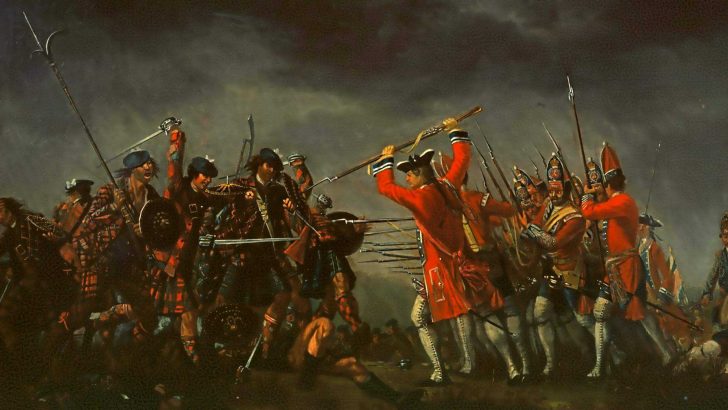Jacobites: A New History of the ‘45 Rebellion
by Jacqueline Riding (Bloomsbury, £25.00)
John Bruton
I have greatly enjoyed reading this new history of the 1745 Rebellion. It appears at a very appropriate time.
I read it during my recent visit to Scotland, during which I was at Glenfinnan, where Prince Charles Edward first raised the standard of his father, James III, as the legitimate King of the United Kingdom on August 19, 1745. Glenfinnan was, and is, an area where many of the local people are Catholic and members of the McDonald clan.
I also saw and the battlefield of Culloden, near Inverness, where the Prince’s attempt to reclaim the throne came to a bloody end on 16 April 1746.
This was the last pitched battle fought on British soil, and ended a struggle that had involved Ireland at the battles of the Boyne in 1690 and Aughrim in 1691.
Riding’s book is timely, as it illustrates the close connection of Scotland with continental Europe, something the English sometimes fail to appreciate, as we see nowadays as Brexit unfolds.
There was also considerable Irish involvement in Charles Edward’s campaign.
The bulk of the small number of French troops, sent to aid him, came from Irish regiments in the French Army. The leading financiers of the campaign were French based Irishmen, Antoine Walsh and Walter Ruttledge. Of the small party that landed in Scotland with the Prince in 1745, the majority were Irish.
Charles Edward was only 25 when he set out on what must have seemed a reckless endeavour, with little chance of success. French military help was modest, and designed more to create a diversion from other theatres of war that were more vital to French interests, than to secure the British throne for James III.
Initially, Charles Edward had astounding success. He took Edinburgh almost without firing a shot, and won the battle of Prestonpans.
Repeal
He held court in Edinburgh for a few weeks, promising, among other things to grant religious toleration to all, and to repeal the Act of Union of 1707 between England and Scotland.
While there he enhanced his mainly highland Scottish Army with lowland Scots recruits. He drew his support mainly from Scottish Catholics and Episcopalians. He got little support from Presbyterians and, in that sense, his Rising was the last violent episode in a religious civil war that had been raging in Scotland for the previous two hundred years.
He then decided to lead a winter invasion of England, crossing the border at Carlisle, and heading for Lancashire where there was considered to be support for the Jacobite cause.
But there was just one small, easily suppressed, rising on his behalf, by Catholics in the vicinity of Ormskirk near Liverpool. The Catholic clergy advised their flock not to get involved. He was able to raise a force in Manchester, mainly among local Catholics, but practical English support for his cause proved very disappointing.
After an agonising debate at Derby in December, it was decided, that he should not continue with his invasion, but should retreat to Scotland, and await more substantial help from France.
Most of the Scottish forces, on which he depended and who had much to lose, preferred to fight for their cause in their native country to waiting to be overwhelmed by superior forces gathering in what was, for them, a foreign land.
The Prince himself had wanted go on to London. But that endeavour could only have worked if there was also a simultaneous invasion from France, which could not be guaranteed. Otherwise Charles’s small Scottish army would have been overwhelmed by at least two English armies, supporting George II, which were seeking it out.
Prince Charles Edward’s army could move much faster than the more cumbersome English forces, and so evaded them to get back safely to Scotland, where he did indeed prove to have more solid support.
Recruits
Once back in Scotland, he got more local recruits and help from France, and won another military victory at Falkirk. But his position was never secure.
Hanoverian forces still held too many of the strong points in Scotland, and the Prince’s Highland clansmen were more suited to short aggressive campaigns, than they were to a war of attrition. Money was also short. French help did not always get through the sea blockade by the British navy.
The Prince was finally defeated at Culloden, near Inverness, by the Duke of Cumberland, the son of King George II, and, like Charles, in his mid 20s. Large numbers of highlanders were massacred in cold blood after the battle, while those fighting for the Prince in French uniforms were spared.
The Prince escaped to France; but was later ejected from there when France made peace with England.
He returned to Rome and the protection of the Pope and of his brother, Cardinal Henry Stuart. He continued to seek a way to win back the throne and in 1749 he even became a Protestant, presumably to make himself more acceptable to English opinion.
He was a leader of flair, courage, tactical genius, and charisma, when things were going well. But he seemed unable to hide his feelings when things went wrong, which demoralised his supporters.
He lived out the rest of his life in Rome, never giving up on the hope of a return of his family to the throne. In terms of public achievement, his life was over, almost before it had begun.


 The Battle of Culloden, oil on canvas, David Morier, 1746.
The Battle of Culloden, oil on canvas, David Morier, 1746. 